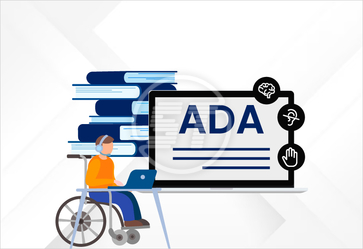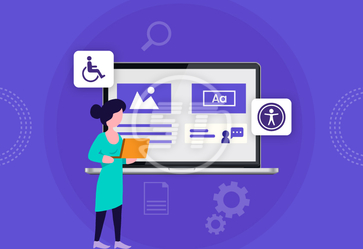Digital content has become an integral part of people’s daily lives, shaping the way they communicate, access information, and engage with the entire world. However, not everyone can fully benefit from these advancements, particularly individuals with hearing impairments. To address this issue, the integration of sign language into digital content has emerged as a powerful tool for fostering inclusivity and improving digital accessibility.
It is undeniable that accessibility is a fundamental aspect of the digital landscape, ensuring that technology is usable by people with disabilities as well. And when it comes to accessibility in every aspect, sign language integration in digital assets is one of the crucial factors.
Let’s understand the connection between sign language and digital content accessibility in detail.
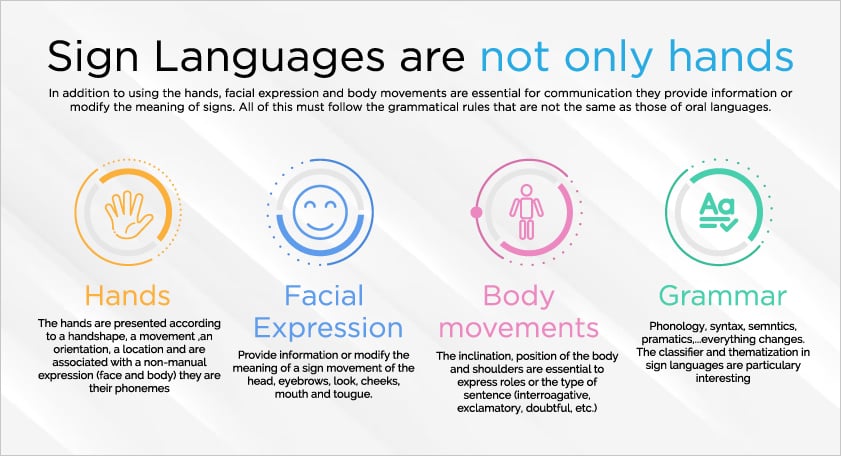
Sign Language is a form of communication!
Sign language is a visual-gestural language used by the Deaf community for communication. It is a rich and expressive medium that relies on hand movements, facial expressions, and body language. Integrating sign language into digital content caters to the specific needs of individuals who rely on this visual language for effective communication.
Advantages of Sign Language Integration in Digital Content!
Inclusive communication
Sign language integration promotes inclusive communication, allowing deaf individuals to engage with digital content seamlessly. It breaks down communication barriers and ensures that information is accessible to a broader audience.
Educational opportunities
Digital educational content is a crucial aspect of modern learning. Integrating sign language into educational materials provides equal opportunities to access digital information to students with hearing disabilities, fostering a more inclusive and equitable learning environment.
Employment opportunities
The digital era has transformed the job market, and many employment opportunities are now found online. Sign language integration in digital communication tools and job platforms enhances accessibility for individuals with hearing loss, facilitating their participation in the workforce.
Legal compliance
Many countries have recognized the importance of digital accessibility and have implemented regulations that mandate accessible digital content. Integrating sign language in digital content ensures that everyone will be able to access the content, avoiding legal complications for organizations.
Types of Sign Languages!
There are many types of sign languages such as ASL, BSL (Libras), LSF, and many more. Out of which, American sign language (ASL) is the most common sign language in the world. More than 300 sign languages are used globally but no universal language to make communication easier for deaf individuals.
ASL (American Sign Language)
People suffering from hearing loss in the United States, English-speaking provinces of Canada, some parts of Southeast Asia, West Africa, and South America, use ASL to interact. It was first used by the American School for the Deaf founded by Thomas Hopkins Gallaudet and Laurent Clerc and it has evolved from French Sign Language.
American Sign Language uses hand signs, facial expressions, and fingerspelling to communicate. It has different grammatical structure and linguistic properties than spoken English. This sign language also has various regional dialects and variations that are influenced by local slang and pronunciation.
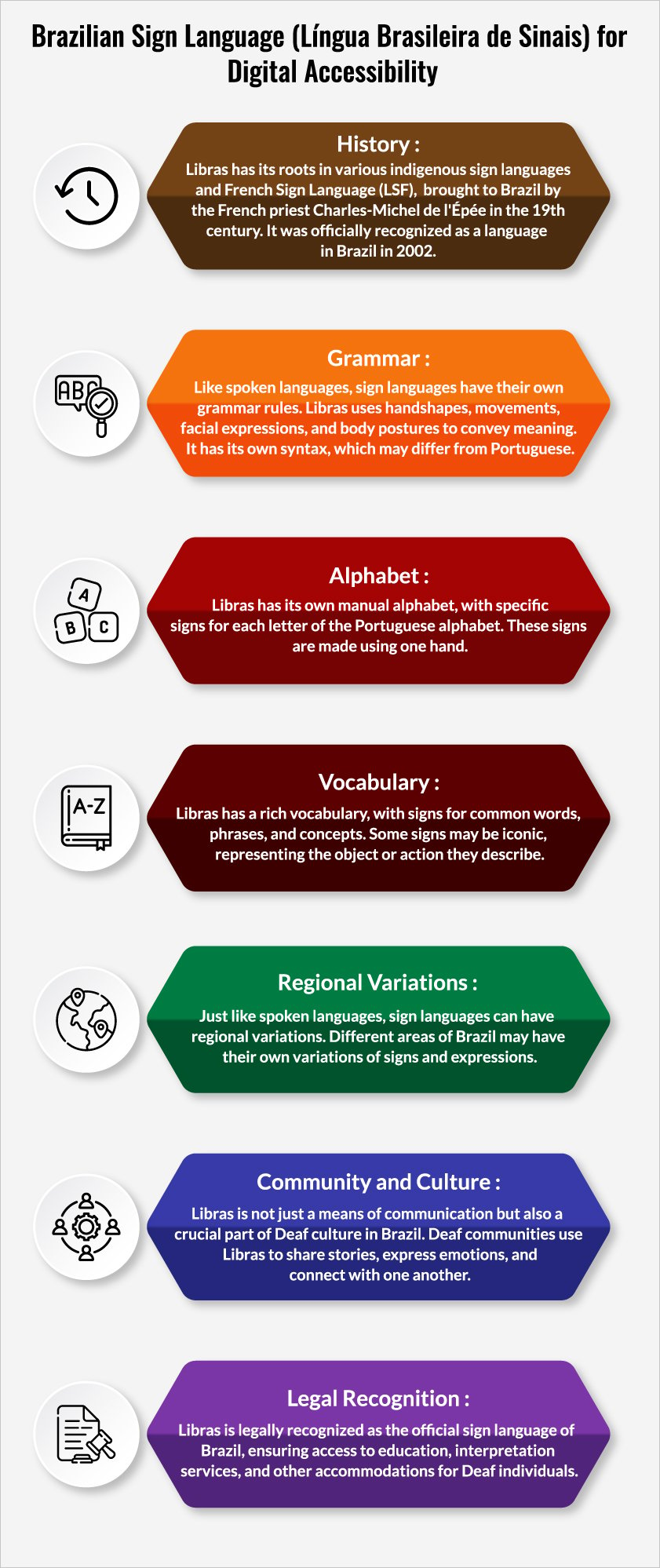
Libras (BSL – Brazilian Sign Language)
Libras is a visual gestural language, which embodies different gestures and expressions that are important for impactful communication. It was originally developed by deaf communities over time, and it has its own grammar and syntax. Libras is also not a universal sign language; it is used by some limited parts of the world including Brazil and Portugal.
French sign language (LSF)
This sign language is used by deaf people in France and some regions of French-speaking countries like Switzerland, Belgium, and Canada. LSF is a combination of iconic signs such as French-inspired signs, fingerspelling alphabet, and invented signs.
Visual expressions and body language are important in LSF likewise other sign languages.
And there are many other sign languages across the world followed by people. In the absence of universal sign language, there are no defined guidelines to adhere to. However, utilizing technology effectively can work in favor of everyone.
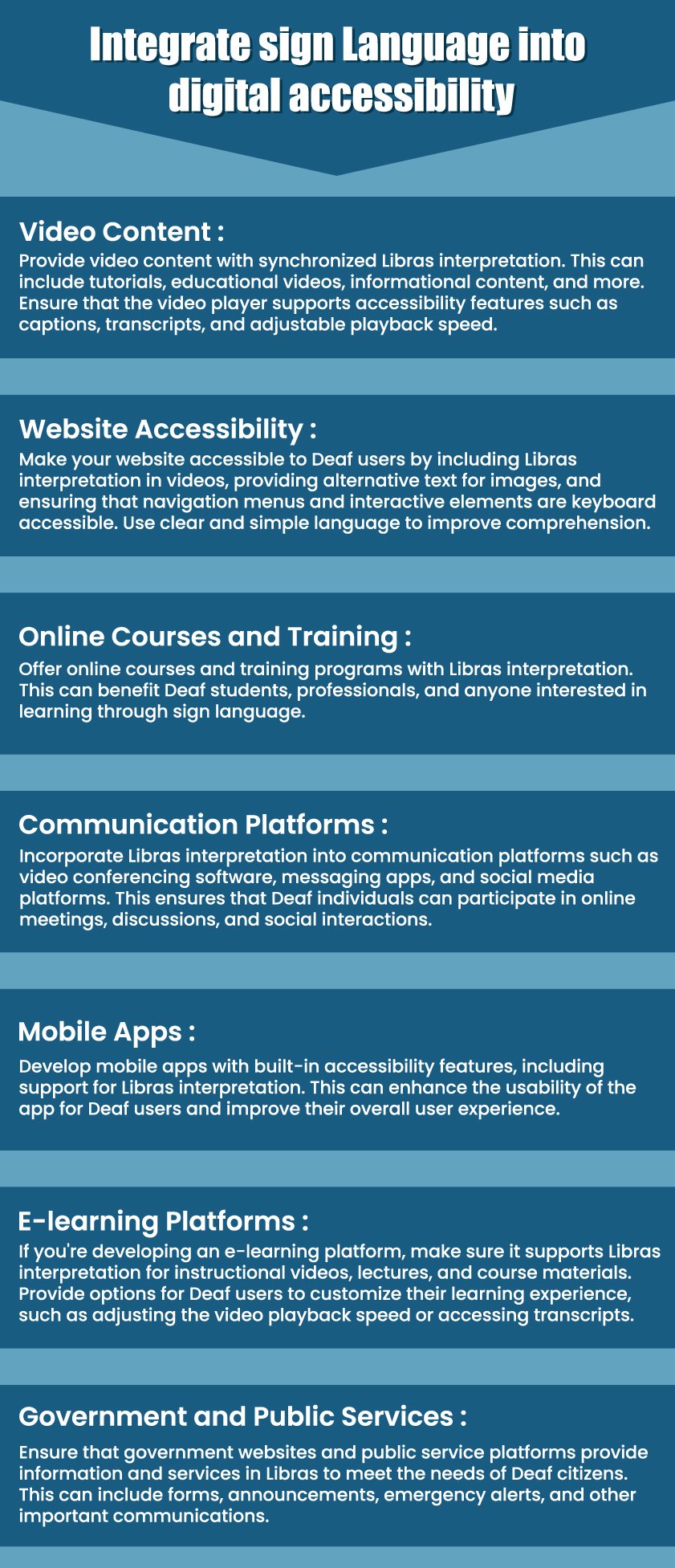
Technology has a significant role to play in sign language inclusion!
Automatic sign language recognition (ASLR)
This technology translates spoken or written words into sign language. Integrating ASLR into digital platforms automates the process of creating sign language content, making it more efficient and widely accessible.
Interactive sign language apps
Developing interactive sign language apps facilitates learning and communication. These apps can teach sign language and provide users with the tools to express themselves in a digital environment.
Video content
Sign language interpretation with video content enhances the accessibility of such content for deaf individuals.
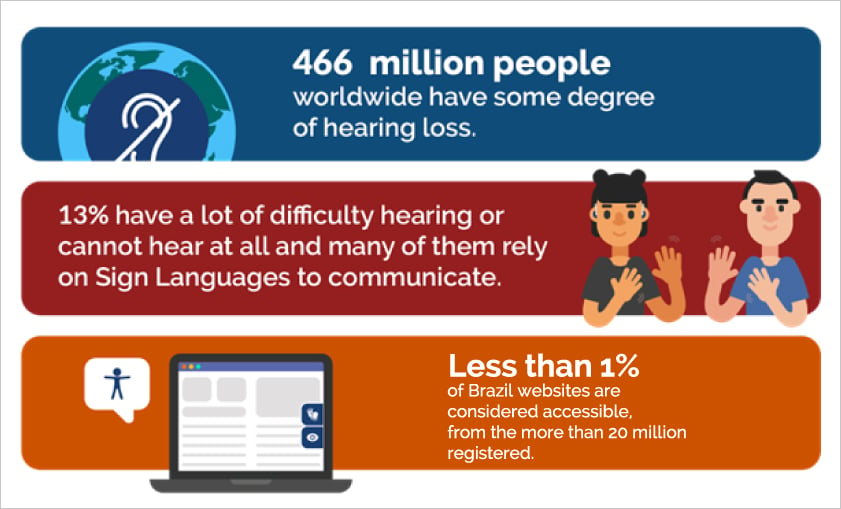
Support sign language via the All in One Accessibility tool (made by Skynet Technologies)!
Libras (Brazilian Portuguese only) is one of the core features of All in One Accessibility, which helps deaf individuals to understand digital content. There is a defined system of algorithms to detect and interpret sign languages. It is trained and tested on a colossal dataset of hand gestures under different lighting conditions. Thus, by detecting hand movements and body language, the All in One Accessibility improves the accessibility of digital spaces for individuals suffering from hearing disability or cannot understand written content.
Wrapping up
To bridge the digital gap, sign language integration is crucial. It makes digital interaction easier for some users and promotes inclusivity in digital spaces. When an organization prioritizes accessibility, it must serve digital content applying all requirements of accessibility inclusion such as sign language!
Create an accessible, inclusive, user-friendly, and barrier-free website for deaf or users with hearing impairment. At Skynet Technologies, we are providing complete digital accessibility solution including accessibility audit, remediation, document accessibility, training, ongoing monitoring, and support to make and improve website accessibility. We also offer AI-based “All in One Accessibility” tool, is a simple, quick, and cost-effective accessibility solution. Let's make your website or web app accessible for everyone, so that every user can engage in a seamless way. For more information, reach out us to [email protected].

